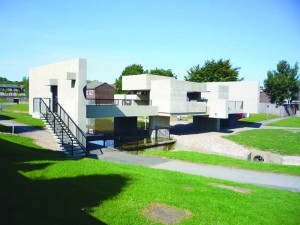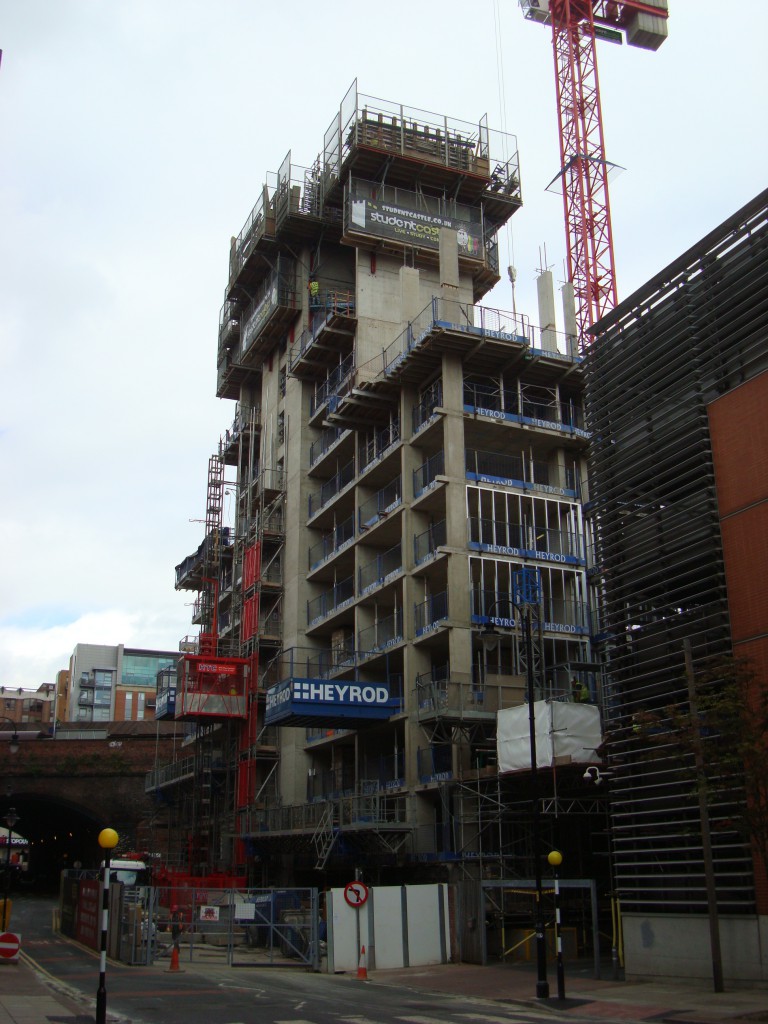
• Cambridge Mosaic
Cambridge Mosaic is also known as The Marquee and consists of 7 levels of post-tensioned slabs and another 4 levels of RC slab and is currently the tallest building in Cambridge. The frame contractor is Getjar Ltd and the frame is being constructed on a 21 week program, due to finish in the next few weeks.
Except for the basement which is reinforced concrete, the remaining levels from Ground Floor to Level 6 are post-tensioned by use of both 4B13 and 4B15 systems and a total slab area of 15,000m2. The basement serves as a parking space and storage while the Ground floor is the commercial level consisting of restaurants and retail shops while the remaining levels are luxury apartments.
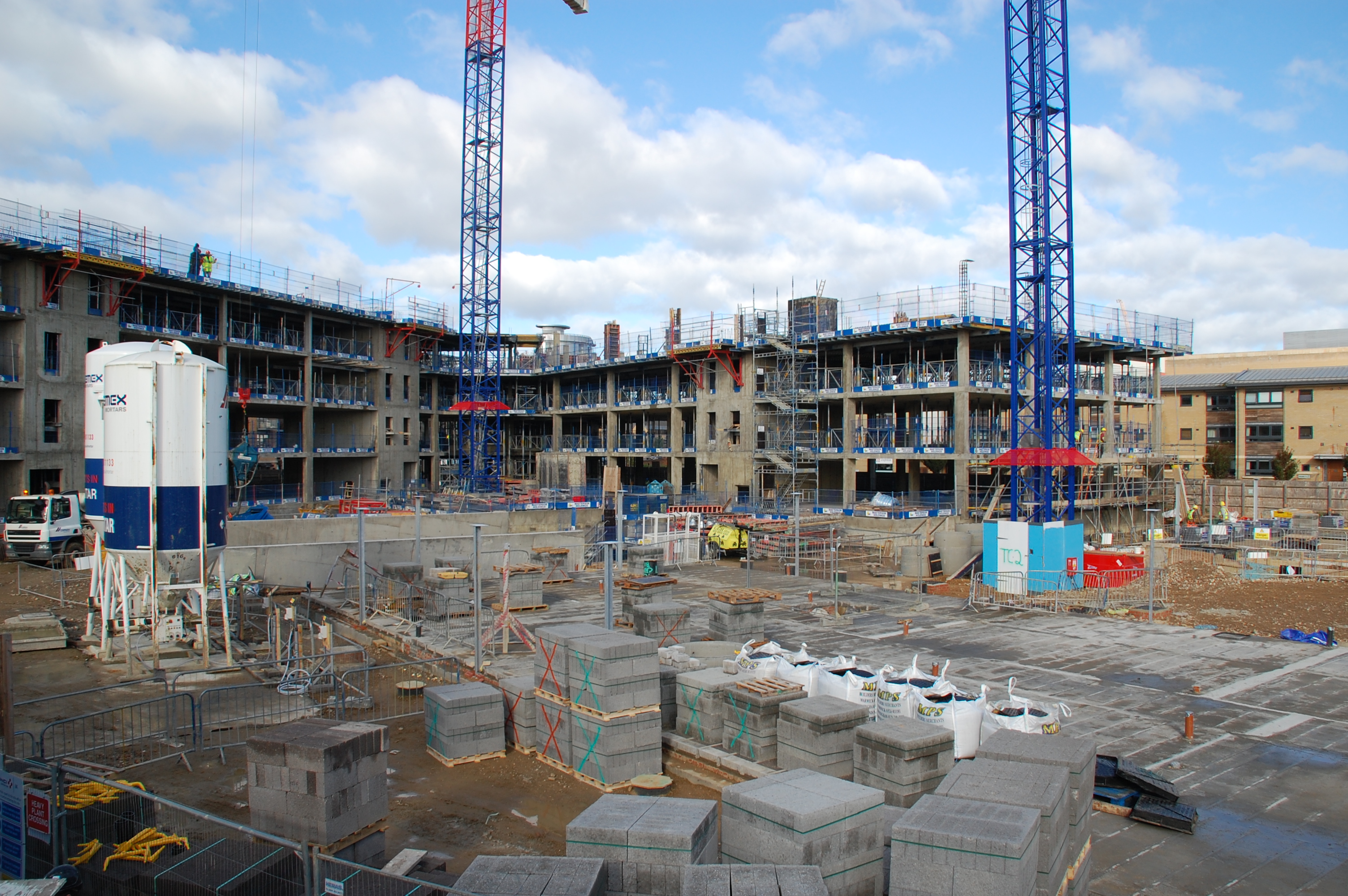
FREYSSINET CONTINUES TO EXCEL IN THE DESIGN AND INSTALLATION OF POST-TENSIONED FLOOR SLABS
Freyssinet is an acknowledged leader in specialized civil engineering and introduced post-tensioned concrete building floor slabs to the UK in the early 1980’s. Since that time we have championed this technology and contributed to its acceptance as a standard technology and consequent exponential increase in utilisation in the last decade.
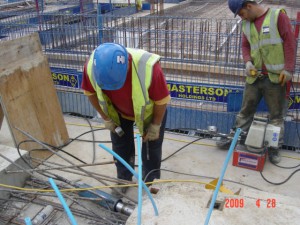
We offer a full service from conception through detailed design and site installation utilising our in-house design team and experienced site managers and operatives.
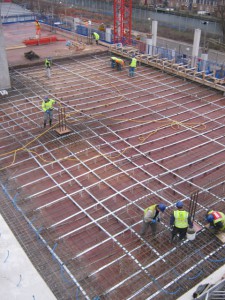
Post-tensioning provides a great many advantages, including:
• Increasing spans and load carrying capacity;
• Reducing slab thickness;
• Eliminating beam downstands;
• Reducing self weight, quantities of materials and loads on foundations;
• Considerably reducing and simplifying passive reinforcement;
• Reducing the number of expansion joints and columns;
• Better punching shear characteristics;
• Outstanding behaviour in seismic zones;
• Increased cracking resistance;
• Increased waterproofing due to concrete compression;
• Reduced excavation in basements;
• Deflection control;
• Removal of the formwork within 3 days;
• Environmental benefits, less concrete, less steel, fewer lorry journeys.
The environmental credentials of post-tensioned construction are one of the major selling points when the client’s team are trying to determine the construction material. Typically, post-tensioned slabs save about 25% of the slab depth and hence 25% of the concrete volume, when compared to the Reinforced Concrete (RC) equivalent. The steel content (reinforcement and post-tensioned combined) is often reduced by 65%.
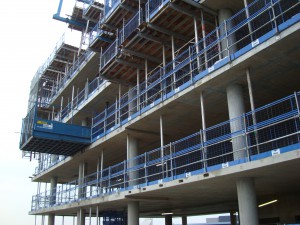
Vinci Construction recently appointed Freyssinet to design post-tensioned floor slabs for UPP at Byron House student accommodation in Nottingham. Freyssinet were involved with Vinci’s bid from tender stage, which contributed to them winning the contract. Frame contractor David Ashley Construction then contracted Freyssinet to complete installation works.
Freyssinet also assisted Vinci, and frame contractor Getjar, with their bid to construct the mixed use Mosaic development in Cambridge. Freyssinet’s early involvement and assistance with value engineering helped to give Vinci an edge. Construction of the superstructure will commence in July 2012.
A further post-tensioned floor slab contract recently awarded to Freyssinet is the Eldon Theatre at Portsmouth University. Again, Freyssinet’s input at tender stage assisted the Main Contractor Morgan Sindall in securing the project. Morgan Sindall then recommended Freyssinet to frame contractor Stephenson Construction and superstructure construction is due to start in mid June 2012.
Freyssinet are close to completing post-tensioned floor slab works on site at St Peters School in Stoke on Trent for frame contractor Metropolitan Developer.
FREYSSINET SUPPLY BESPOKE BEARINGS FOR LEADENHALL BUILDING
The Leadenhall Building is a 47 storey, 225 metre (737 ft) tall skyscraper, designed by Richard Rogers, which is currently under construction in London. With its distinctive wedge-shaped profile, it is informally referred to as the Cheese Grater and is set to become one of the tallest buildings in the City of London. The development is expected to cost approximately £286 million in total.
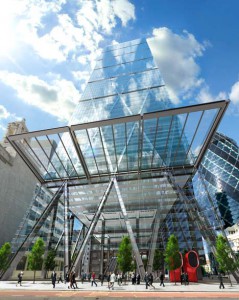
In 2007-8, the existing building on the site was demolished in preparation for redevelopment. However due to the economic climate, construction was delayed and it was not until October 2010 that the project was revived. Oxford Properties is now co-developing the property in partnership with British Land, and in July 2011 they announced Laing O’Rourke as the Main Contractor for the works.
The new tower will feature a tapered glass façade on one side which will reveal the steel bracings, along with a ladder frame that is aimed to accentuate the vertical appearance of the tower. The base will feature a 30 metre high atrium which will be open to the public, and extend the adjacent plaza.
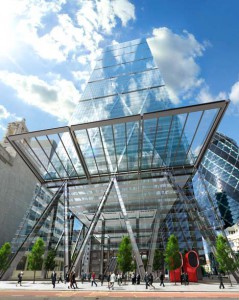
The structural steelwork sub-contract was awarded by Laing O’Rourke to Watson Steel Ltd. Freyssinet were selected in early 2012 to supply 162No. Tetron Disc Bearings (Pot type) which will support the floor beams on the outer columns. Freyssinet’s in-house design team worked in close liaison with Watson Steel to produce bespoke bearing designs to suit the very limited dimensional requirements with high horizontal forces. Fixing arrangements have also been tailored to comply with the restricted requirements.
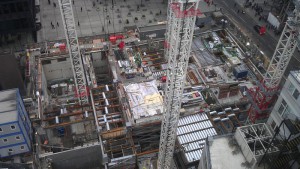
Production of the bearings at Freyssinet’s factory in Telford is phased to meet the installation programme and construction is scheduled for completion in 2014.
FREYSSINET PROMOTES POST-TENSIONED CONCRETE TECHNOLOGY IN THE CONSTRUCTION OF SCHOOLS AND COLLEGES
Freyssinet introduced post-tensioned concrete building floor slabs to the UK in the early 1980’s. Since that time they have championed post-tensioning technology and contributed to its acceptance as a standard system of construction.
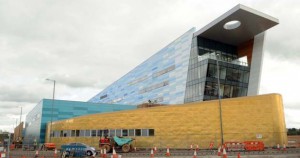
Offering a full service package, their in-house design team can support clients from conception through detailed design and site installation utilising experienced site managers and operatives. Freyssinet sets high and specified performance criteria positioned above the usual industry standards.
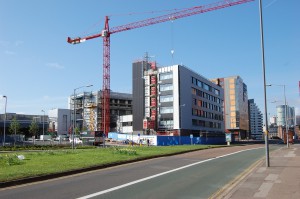
Last year Freyssinet successfully completed a number of post-tensioned slab contracts for the construction of schools and colleges throughout the UK. These included:
• The Learning Centre, Ebbw Vale Campus, Wales
• Bourneville College, Birmingham
• The Big Build, Rutland
• Orminston Academy, Birmingham
• Sir Robert Woodard Academy, Lancing
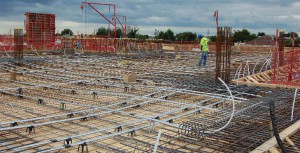
Freyssinet have recently been awarded further post-tensioned floor slab contracts for Wade Deacon High School in Widnes and the Learning Resource Centre at Stafford College. Freyssinet first got involved with the Wade Deacon project over a year before it was finally let, working with VINCI Construction to give cost advice on a concrete alternative to the then conforming steel framed structure with precast concrete flooring units. The post-tensioned alternative saved significantly on the build cost and the flat soffits assisted the architectural planning and services layout.
The structure consists of a spine block running the full length of the 106m long historic façade. Springing from the spine are three teaching wings, each comprising an atrium bounded by classrooms on either side. The three storey structure has 9,750m2 of suspended PT slabs, all being 230mm deep, each floor will be concreted in six pours.
The post-tensioning system selected by Freyssinet’s in-house design team is the 4B13 bonded system. At level 1, two 1000x350mm deep PT beams have been used to span up to 13.7m to allow a pair of columns to be omitted thus creating a feature access way. And on the roof level the same sized PT beams cantilever 3.3m thus avoiding having to run columns down through teaching space below.
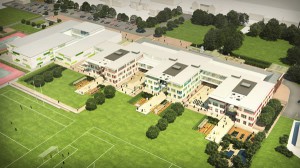
Post-tensioned concrete is an ideal choice for academic building construction. It reduces the depth of the structural members meaning the floor to floor height is reduced. Post-tensioned concrete also has excellent deflection control due to the inbuilt parabolic profiles of the tendons, which directly counter deflection effects.
There is plenty of experience within Freyssinet of building post-tensioned concrete academic buildings. The majority of these have been designed and detailed by our in-house team of qualified and experienced engineers and technicians.
Post-tensioning provides a great many advantages, including:
• Increasing spans and load carrying capacity;
• Reducing slab thickness;
• Eliminating beam downstands;
• Reducing self weight, quantities of materials and loads on foundations;
• Considerably reducing and simplifying passive reinforcement;
• Reducing the number of expansion joints and columns;
• Better punching shear characteristics;
• Outstanding behaviour in seismic zones;
• Increased cracking resistance;
• Increased waterproofing due to concrete compression;
• Reduced excavation in basements;
• Deflection control;
• Removal of the formwork within 3 days;
• Environmental benefits, less concrete, less steel, fewer lorry journeys.
The environmental credentials of post-tensioned construction are one of the major selling points when the client’s team are trying to determine the construction material. Typically, post-tensioned slabs save about 25% of the slab depth and hence 25% of the concrete volume, when compared to the Reinforced Concrete (RC) equivalent. The steel content (reinforcement and post-tensioned combined) is often reduced by 65%.
In addition to academic buildings, post-tensioning also suits a wide variety of projects, such as:
• Offices
• Retail developments
• Underground car parks and multi-storey car parks
• Hospitals
• Business centres
• Industrial buildings
• Sports buildings
• Residential towers
FREYSSINET COMPLETE CONCRETE REPAIR WORKS AT HARLECH SWIMMING POOL
In 2007, the future of Harlech swimming pool in Wales, which was built in the 1970s, was in doubt when Gwynedd Council decided it could no longer afford to run it. A community company set up to save Harlech swimming pool from closure was established, and in 2010 they were handed the keys to the pool, and had secured grants from the lottery and Welsh Government to fund essential refurbishment works.
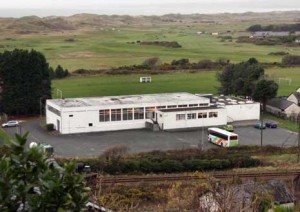
In July 2011 Freyssinet were appointed to carry out condition surveys of the swimming pool crawl duct walls and soffits to establish the scope and quantum of repair required to the concrete surfaces. The survey undertaken included a 100% sounding survey of the service void swimming pool elevations and soffits, a cover meter survey to establish reinforcement density and continuity testing to estimate the extent of electrical bonding that may be required during concrete repair to make the reinforcement compatible with electrochemical repair techniques.
Results of the survey found there to be deteriorating reinforcement steel within the crawl duct walls and soffit, along with areas of cracked and spalling concrete. Freyssinet put forward a solution of concrete repair and the installation of a cathodic protection (CP) system, appointing their sister company Corrosion Control Services Limited (CCSL), specialists in concrete corrosion prevention, to provide the design and specification for the CP system.
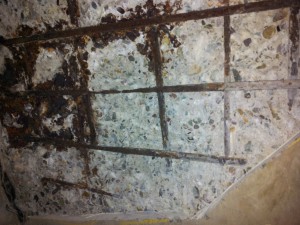
The perimeter crawl ducts where the works were to be carried out were classified as confined space, therefore, careful planning, correct equipment and monitoring as well as competent certified personal was all essential to complete the project in a safe manner.
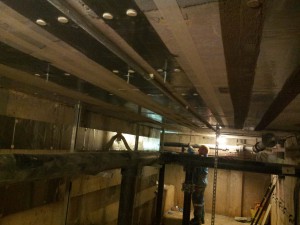
Repair works commenced in December 2001 and the project was completed in two stages. Initially, Freyssinet broke out all delaminated and spalled concrete, then tested and ensured continuity of the reinforcing steel and completed concrete repairs.
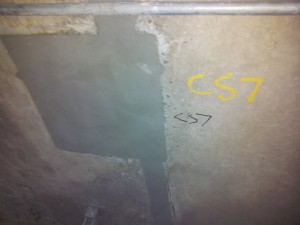
The concrete repair areas were then allowed to cure prior to the installation of the ZLA “sticky zinc” galvanic CP system. The locations of zinc were marked out on the walls and soffit, and small pockets were broken out to allow for studs to be welded to the reinforcement and then electrically connected to the ZLA.
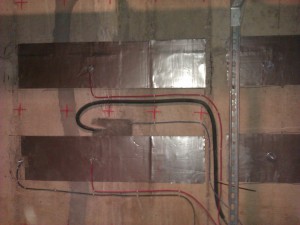
The works were completed in January 2012 to the satisfaction of the client. It is hoped that the successful refurbishment of the swimming pool, along with a new climbing wall and cafe will increase revenue and ensure the building can remain open.
CONCRETE REPAIR AND ENHANCEMENT
Despite its many undoubted qualities, unfortunately concrete does not last for ever. The state of any potential concrete structure repair needs to be professionally assessed, so that the appropriate steps can be taken to ensure the safety of the structure, as well as its sustained durability for the future.
Freyssinet are able to offer a complete solutions package for any concrete structure, no matter how large it may be, and no matter how much it may need in the way of concrete repairs. By using sustainable technologies, Freyssinet are able to do more, but with less materials and energy, which sets them apart from the competition. Freyssinet can offer a full range of integrated concrete enhancement solutions, including: concrete repair, concrete replacement, hydrodemolition, wall sawing and diamond coring.
Concrete repairs are perhaps the most effective way that Freyssinet can prolong the life of your structure. If the concrete shows signs of cracking, if it is spalled, if it has become honeycombed or damaged in any other way, a concrete repair, or in more extensive areas, concrete repairs, may be the answer.
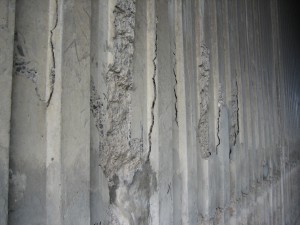
Before any concrete repair work is completed, thorough testing needs to be carried out to assess the true nature of any damage or degradation. Freyssinet are able to offer a comprehensive range of tests to accurately identify and diagnose any problems, before advising on what structural concrete refurbishment is required. These tests can also identify any underlying causes that may need to be addressed, saving additional expense for concrete repairs later on.
Once the appropriate type of concrete repair is identified, a range of techniques are available, including: leak sealing, sprayed concrete, pressure resin injection, vacuum resin injection, or a combination of pressure and vacuum resin injection using epoxy, or patch and thin bond repairs using high quality, modified mortars.
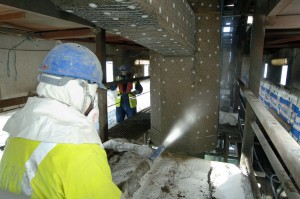
If the concrete is in poor condition, it may be that a concrete repair is not a viable option. Concrete replacement may be necessary, and once again, Freyssinet have a range of solutions available.
Before any replacement can begin, defective concrete will need to be removed. As part of your total Freyssinet solution, removal can be performed by conventional breaking out, or by using hydrodemolition techniques, by Freyssinet’s own in-house team.
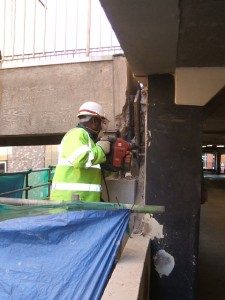
Hydrodemolition utilises high pressure water jets, and can be used in small and large areas alike. It can also be used for the removal of coatings, which will then provide an excellent surface for repair materials or new coatings to bond to. This technique reduces the risk of potential harm caused by vibrations, cleans existing steel re-enforcement whilst causing no damage, eliminates dust and debris, and can result in a more efficient programme.
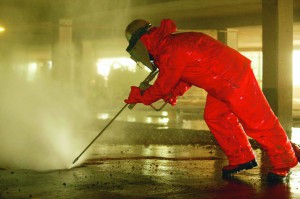
The Freyssinet team have over twenty years of experience in a wide range of hydrodemolition applications. As well as being highly trained and experienced, you can rest assured that they conform with, and adhere to, all the latest health and safety and quality standards of the industry.
Once the old concrete has been removed, Freyssinet will replace this with high performance concretes and mortars.
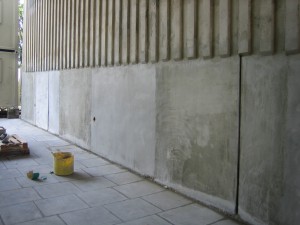
Concrete repairs and replacement are only part of a wide range of complimentary services offered by Freyssinet. Whether your project involves concrete bridge repair, concrete building repair, or any other kind of concrete structure repair, Freyssinet can offer a holistic package of products and services. Diagnosis, prevention and cure, are all part of the service offered by a company with the reputation, credentials and experience that have secured them landmark projects for the Highways Agency, and many others.
